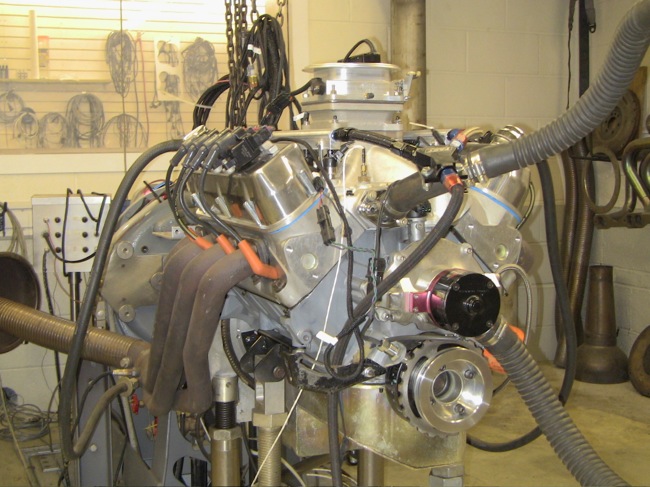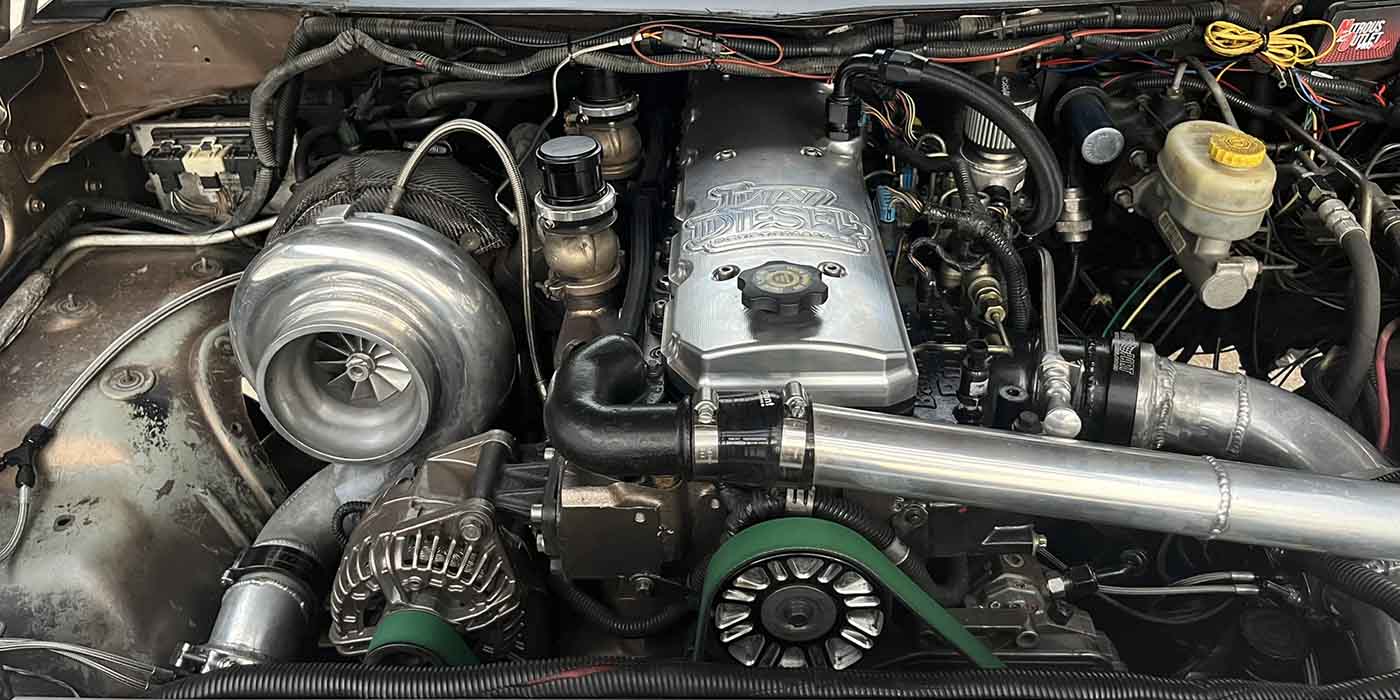Some would say that one of the criteria for being a “real” performance engine builder is having your own engine dyno.
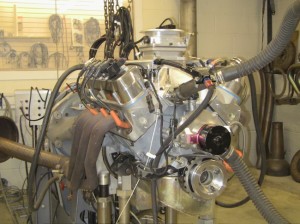
A dynamometer is not just a tool for measuring horsepower and torque (though some people think that’s all a dyno is used for).
It’s a quality control tool that allows you to make sure everything is right before an engine goes out the door.
An engine dyno provides a means of breaking-in, testing and tuning an engine before it is installed in a customer’s vehicle or race car.
The dyno gives you control over the all-important initial break-in process. You can make sure the engine is prelubed before it is cranked over for the first time, and that the engine is developing good oil pressure once it fires up and is running.
One of the most common causes of engine warranty claims is not breaking in a new engine properly. If you are using break-in oil (highly recommended), that oil is good for the break-in only and needs to be drained once the break-in process has been completed.
Dyno Formulas
There are two basic formulas for correcting dyno results. Both were developed by the Society of Automotive Engineers (SAE).
The older formula that most shops still use today is J-607.
This older formula lives on because it gives results that are about four percent higher than the new J-1349 formula – which is handy for promoting big dyno numbers to a customer or potential customer.
By comparison, the newer J-1349 formula more accurately corrects an engine’s true power output and is used by the auto makers to rate the power output of their engines.
Most dyno equipment allows you to use either formula to correct the results, or to use no correction factor at all.
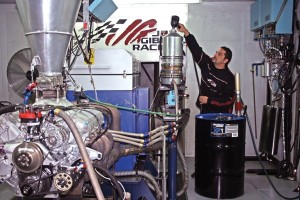
Keeping the engine’s RPMs up during those first critical 20 to 30 minutes of break-in time is absolutely essential for the piston rings to seat and the lifters to mate with the camshaft. Mess up here and the engine may burn oil or experience a premature cam failure.
The dyno also allows you to monitor the engine’s oil pressure, coolant temperature and air/fuel mixture (via O2 sensors or exhaust temperature sensors) while the engine is running to make sure the fuel mixture isn’t going too rich or too lean.
You can also monitor spark timing and tweak the spark curve as needed to make sure the timing isn’t over-advanced or retarded.
And if anything goes wrong, you can shut the engine down before any major damage can occur.
Everybody makes mistakes, so it’s better to catch a problem while the engine is still on your dyno than to send it out and have it blow in the middle of a race.
The bottom line is that a dyno is much more than a tool for measuring an engine’s power output. It’s a tool that can give you control, confidence and credibility on every engine you build.
Dyno Designs
An engine dyno measures engine torque and horsepower by creating a calibrated amount of resistance while the engine is running.
This can be done by a variety of means, including a water brake, electromagnetic resistance (eddy current brake) or an AC or DC electric motor, or by a hydraulic brake (oil pump).
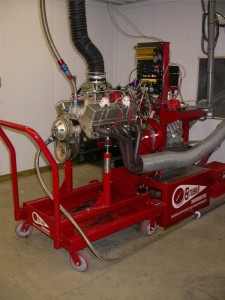
estimate how many dyno runs per day/week/month you might do, and how much you can charge per dyno run or for billable dyno time to estimate how much money a dyno might generate in your shop. But you also have to factor in what the dyno can do to reduce engine warranty claims, and how you can use it to promote your services and generate new business.
Most engine dynos that are used in shops for performance work use a water brake or an eddy current brake. A water brake engine dyno can usually handle a wide range of engines, from under 100 horsepower up to over 1,500 horsepower or more depending on the model.
The water brake is connected to the engine’s flywheel or flexplate with a short driveshaft. Inside is a stainless steel or aluminum/bronze stator that churns the water to create resistance. This also creates a lot of heat, so the water has to be cooled during the dyno run.
An eddy current brake uses a different approach to creating resistance. Resistance is created by spinning a steel disc in a strong magnetic field.
An eddy current dyno provides a little more control than a water brake, and it has a faster response time. It may be air-cooled or water-cooled depending on the model and power rating.
A typical water brake or eddy current engine dyno will cost you around $30,000 to $40,000 for the dyno itself, and as much as $50,000 to $100,000 or more for the complete dyno setup with data acquisition, instrumentation and test cell.
Obviously, the more bells and whistles you buy, the higher the price. More data acquisition channels can provide more information, but also add to the cost of the equipment.
For high end dyno work, some shops use an AC dyno. This type of dyno uses a powerful alternating current (AC) electric motor to create resistance.
The AC motor can also function as a generator and route power generated by the engine back into the power grid. The electric motor can also spin an engine that isn’t running to measure things like frictional losses, compression and intake
vacuum.
The only drawback with AC engine dynos is their cost, typically $250,000 or more just for the basic dyno and absorber.
Cell Block
One feature you’ll want in addition to the engine dyno and data acquisition equipment is a test cell or chamber to house the engine when it is running on the dyno.
A test cell isn’t absolutely necessary, but anything can happen when an engine is making a hard pull on a dyno. Because of this, it’s a good idea to have the engine safely
enclosed inside a sealed room or chamber.
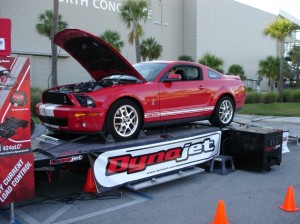
The test cell should provide good ventilation, including exhaust venting so exhaust fumes are not sucked back into the engine’s intake system.
The room should also provide adequate sound insulation (especially if you have neighbors who might object to the noise), good lighting, electrical and plumbing hookups for power supply (usually 220v) and engine cooling, and some type of approved fire suppression system in case of fire.
You can save money by building a test cell yourself, or you can hire a local contractor to do the work. Modular test cells are also available that you can install yourself or have installed. Any test cell you build or install obviously has to meet local fire, environmental and building codes.
If you’re buying a new dyno from an equipment supplier, the setup time will vary depending on how long it takes to build or prepare the test cell.
If the test cell is essentially ready when the equipment arrives, you can usually be up and running in a day or two.
Most dyno suppliers also provide the initial training on how to use their equipment.
The biggest challenge in many instances is not the dyno equipment itself but how to use the computer software that controls the dyno. This can be difficult for someone who has little or no computer experience.
But if you are somewhat familiar with computers and can do basic things like open and move files, you should have no trouble mastering the data acquisition and recording software that gives you the dyno results.
Measuring ROI Output
Calculating the payback of an engine dyno isn’t easy because it’s not the same as other shop equipment like a valve-and-seat machine, cylinder hone or even cleaning equipment.
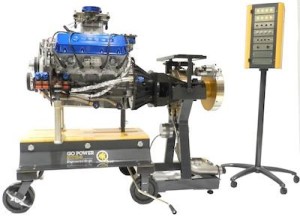
With other types of shop equipment, you can figure your return on investment (ROI) by estimating how many jobs per day/week/month the equipment can do and then multiply that number by how much you charge per job. You can then compare the revenue the equipment will generate against its lease or purchase price to estimate how quickly it will pay for itself.
With an engine dyno, the calculations are not quite the same. Like other shop equipment, you can estimate how many dyno runs per day/week/month you might do, and how much you can charge per dyno run or for billable dyno time to estimate how much money a dyno might generate in your shop.
But you also have to factor in what the dyno can do to reduce engine warranty claims, and how you can use it to promote your services and generate new business. These last two benefits may generate more payback than the equipment itself generates in billable dyno time.
It’s hard to figure an exact dollar amount that quality control is worth. But for every engine problem or failure that your dyno prevents, that’s one less warranty expense you have to eat and one less angry customer you have to deal with.
Having the ability to dyno test and tune engines also means you can optimize engine performance and solve problems that might be difficult to solve on a race track or street vehicle. If an engine has a flat spot or runs short on power above or below a certain RPM range, it will show up on a dyno graph. You can then focus on fuel mixture, spark timing or valvetrain issues that might be causing the problem.
It’s a lot faster and easier to make a few adjustments while the engine is on a dyno to see if the changes makes things better or worse than it is to make tuning adjustments on the track or street.
A dyno can provide many years of service. The basic equipment should last 30 to 40 years or more. Even so, the typical dyno will undergo three or four software and data acquisition upgrades during its lifetime.
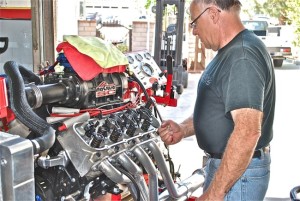
As computer technology and operating systems continue to evolve, upgrades become inevitable with PC-based controls. Software improvements may include better displays and controls, more features and so on, so you’ll probably want the latest upgrades as they become available.
Dyno Upkeep
There’s not much maintenance that’s required to keep a dyno running. Depending on the type of brake and throttle controls that are used, you may have to lubricate some bearings, cables or other parts periodically. It’s also a good idea to inspect the driveshaft coupling and U-joints regularly for cracks or other problems.
Data acquisition sensors such as O2 sensors have a certain lifespan which will vary depending on hours of usage. So figure on replacing some of these sensors as needed at some point down the road.
Wiring harnesses that connect to engine sensors, ignition and fuel system components can be damaged by careless or rough handling, so repairs or replacement of some connectors or wires may become necessary depending on usage.
Engines also produce a lot of vibrations while they are running hard on a dyno, so check the engine mounts and all the nuts and bolts on the support stand to make sure nothing is loose or broken.
Something else to keep is mind is that four cylinder engines are typically rougher running engines that produce more harmonics than a V8, so you are more likely to have something come loose or break while testing a four cylinder engine than a big powerful V8.
One dyno supplier said you should treat your dyno like it’s your race car. Set up a regular maintenance schedule to keep it running smoothly and trouble-free.
Final Results
There are lots of tips and tricks that are important with dyno tuning engines. One is to always be consistent. The idea here is to minimize variables that can affect dyno results. Use the same setup procedures every time.
Make sure the engine’s oil temperature is the same each time so you can compare results accurately.
Dyno results also need to be “corrected” for air density (air temperature, humidity and barometric pressure) is you want to be truly accurate and have the ability to compare apples to apples. Air density changes with temperature, altitude and humidity.
Consequently, the results of a dyno run done in Miami Florida at sea level on a hot humid day are not going to be the same as the dyno results on the same engine tested in Denver Colorado on a cold dry winter day.
If all you want is raw uncorrected horsepower and torque numbers for a given dyno run, you don’t need to use any correction factors to massage the numbers.
But if you want to compare dyno runs from different days when weather conditions are not exactly the same, you have to use a correction factor to equalize the results. Remember, you want to be consistent.
Fudging Numbers/Result Errors
So can dyno results be fudged? You bet they can by entering incorrect air density data at the start of a test.
Unscrupulous shops have been known to fudge dyno results to impress customers or to convince a customer that their dyno tuning skills produced a bigger improvement than it actually did.
A more common problem, however, can be inaccurate or misleading dyno results because the equipment is out of calibration.
A dyno is only as accurate as its torque calibration. A torque calibration procedure needs to be performed periodically to maintain the accuracy of the equipment, otherwise the test results may drift over time and give you misleading information.
It’s also important to understand the difference between an engine dyno and a chassis dyno.
These are usually two different types of dynos, although one dyno manufacturer does make a combination unit that can be used as both a chassis and engine dyno.
An engine dyno measures power at the engine’s flywheel or flexplate while a chassis dyno measures power at the drive wheels.
The engine dyno requires mounting the engine on a stand and hooking up fuel, ignition and throttle controls along with any data acquisition that’s required.
A chassis dyno requires no hookups other than driving a car onto the rollers, lashing it down and putting the pedal to the metal to see what it will do.
Rear wheel horsepower is always less than engine horsepower (typically 40 to 50 hp less) because of frictional losses that occur in the transmission and differential. A chassis dyno is handy for power tuning engines that are already installed in a vehicle or race car, but would not be of much use for engine break-in or maintaining quality control in the shop.
Editor’s Note: Thanks to Christopher Wright of Pro Car Associates, Inc., Akron, OH, for providing art for this feature. For more on his custom-built Ford race engine, check out their dyno video at: www.youtube.com/watch?v=YLV_Ye4YMJE

